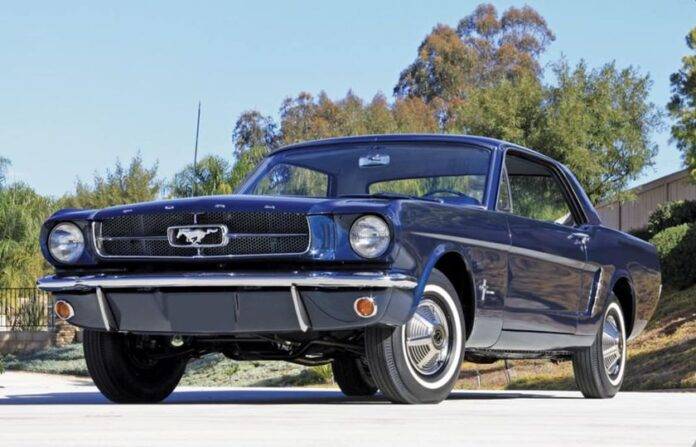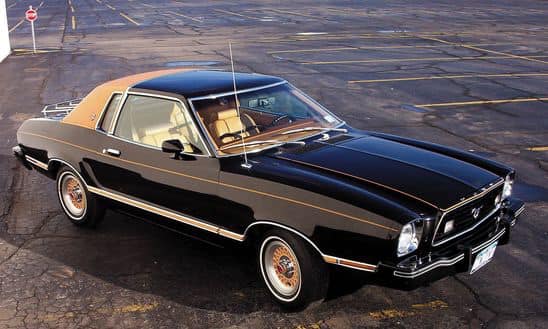On March 9, 1964 the first production Ford Motor Company Ford Mustangs began rolling off the assembly line. Nearly 700,000 were sold by the time the 1966 Mustang entered production, and some 22,000 were sold on the first day of availability. For 1966, over 600,000 would be sold. Today, Mustangs of all variety continue to be of high interest with people in all walks of life.
Interestingly, the first concept Mustang, Mustang I, was a two-seat, open-top, mid-engine sports car meant to fill the void between a go-kart and a Corvette. At least, that was the command at Ford HQ, who wanted something remarkably athletic, tunable, and attractive to racing sanctions and drivers, and it was delivered, making its debut at Watkins Glen Raceway in New York on October 7, 1962. Dan Gurney piloted the car around the track supposedly achieving speeds of 120 MPH, spurring the media to promote that Ford was building a car to compete with Corvette. This, of course, drew a lot of attention to Ford, exactly what they needed.
Mustang I would tour the country and work in consumer focus groups, including groups at colleges, to gain the public’s insight and opinion. By the end of the day, it was confirmed that Mustang I would have only limited public appeal, something Ford knew would be the case from their experience with Thunderbird and watching Chevrolet struggle to sell early Corvettes but also struggle to keep Corvair and Chevy II in supply. Die hard sports cars don’t succeed in sales, but an inexpensive, stylish four seater was poised to rule the world.
But the Mustang I was awesome as a publicity tool, and showed the world, again, what Ford could do.
Mustang II was introduced in 1963, and looked infinitely closer to what would be put into production. The long hood, short deck body design seemed to appeal universally, while the Falcon’s traditional front engine/rear-wheel drive platform worked perfectly as the basic underpinning for the new car. The press was having a ball scooping one another, and Ford marketing worked seemingly ‘round the clock, feeding reporters scoops and secret information to keep the name before the public eye. The whole world was having a ball and couldn’t wait for Mustang to be available. And, by the time Mustangs were in showrooms, buyers were ready to burst.
By 1973, the Ford Motor Company Ford Mustang had become roughly the size and weight of a midsize family sedan. While it handled beautifully and rode exceptionally well, many felt it had lost its way. Sustaining that notion were buyers, of which only 134,867 could stomach buying a 1973 Mustang. The writing was clearly on the wall by 1971, buyers wanted smaller, sportier, more efficient cars, and Ford’s new president, Lee Iacocca, was going to make sure they got what they wanted.
The Ford Maverick was selling very well, the Pinto likewise, and for a brief moment, Ford toyed with the idea of a Maverick-based Mustang, but ultimately decided a Pinto-based Mustang would appeal to more buyers and sell better. Dick Nesbitt began design work in 1971 creating a car that he said was less Pinto than the original Mustang was a Falcon. Examining the Mustang II more closely shows how different it was compared to a Pinto.
Mustang II was the first American car with power rack and pinion steering, it had unibody construction, an engine-mount subframe, and an isolated front suspension, none of which was on the Pinto (except the unibody), but all of which gave Mustang II a remarkably tight feel. It was nearly 500-pounds lighter and nearly 18-inches shorter than the outgoing ‘73 Mustang, which spelled nimble maneuverability and fuel efficiency. Available in two-door notchback or three-door lift back, the convertible was dropped as consumers sought safety over open-air motoring. The lift-back offered substantial cargo access and interior space, which also spoke loudly to buyers. So loudly, that over 385,000 were sold during the first year, with 1.1-million sold between 1974 and 1978. Needless to say, Iacocca’s vision of a little jewel with high build quality and exceptional efficiency was indeed the right car at the right time.
So, here’s to one of the most successful car models ever, the Ford Mustang. Happy birthday.
Thanks for stopping by!
























